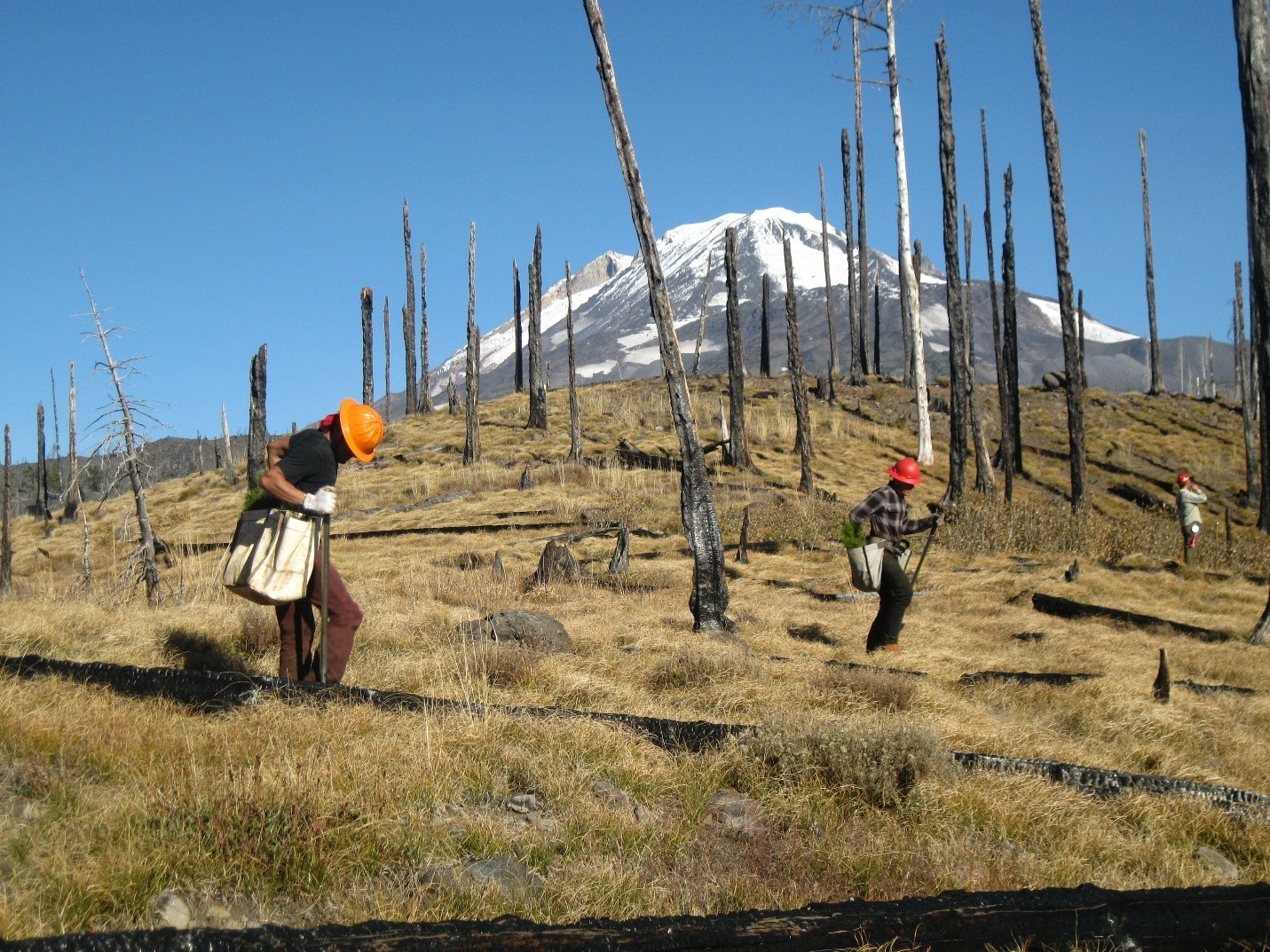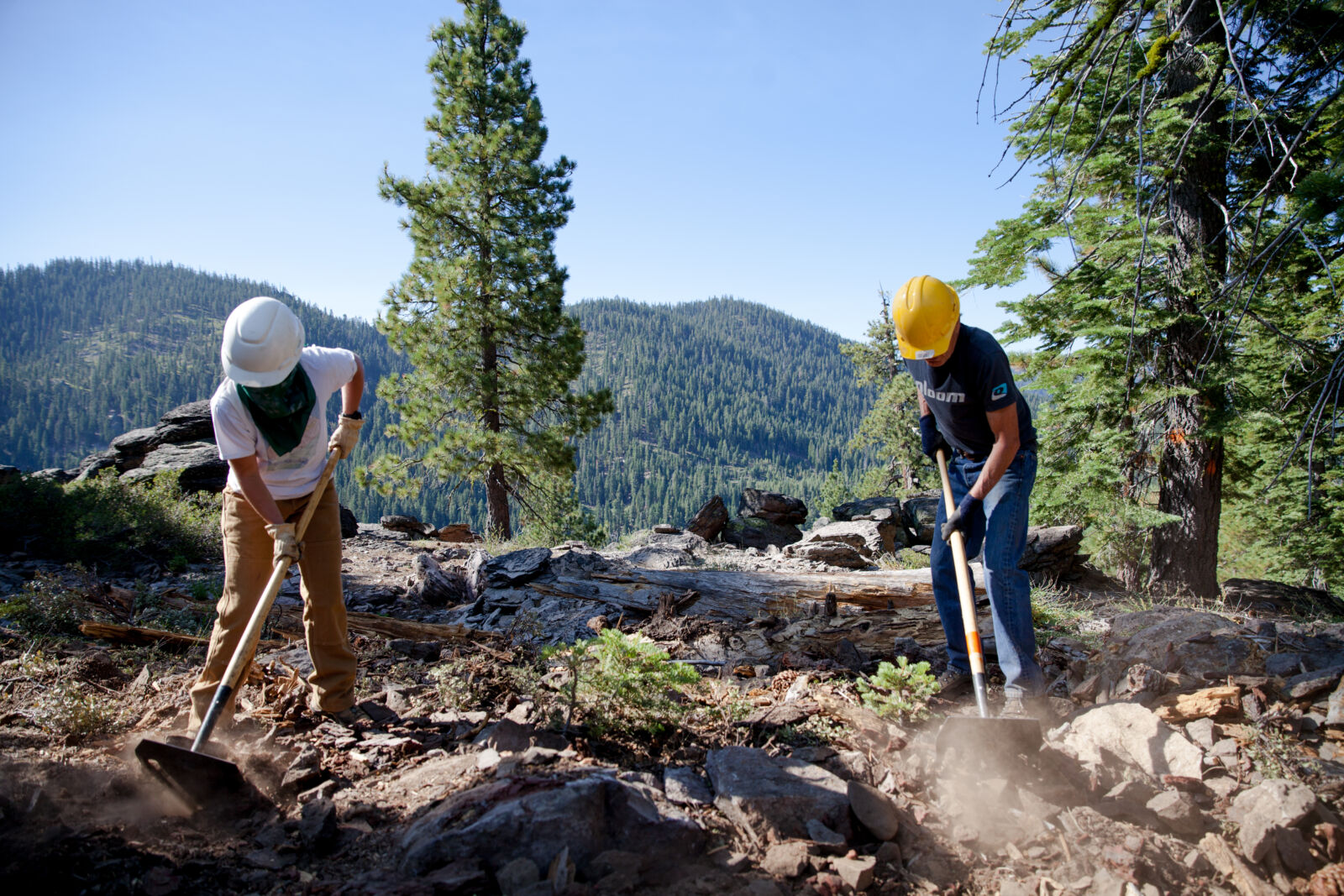Reforestation is a top priority for the National Forest Foundation, the USDA Forest Service, and many state, tribal, and private forest land managers. In fact, the U.S. Congress directed the Forest Service to improve and protect forests as early as 1897 with the passage of the Organic Administration Act. Though our understanding of forest health has advanced remarkably since then, reforestation remains a key goal. Why?
Since the advent of agriculture, humans have cut down three trillion trees—or about half of all trees on Earth—for timber, food production, urban development, mineral extraction, and energy use. Though these services have provided humans with our current lifestyle, removing so many trees also has adversely impacted our living environment.
Reforestation can occur naturally after natural disturbance events like wildfire and insect and disease infestations, or naturally through silvicultural treatments. Silviculture refers to strategies to control the establishment, growth, composition, health, and quality of forests and woodlands. Kinds of silviculture treatments include thinning, harvesting, planting, pruning, and prescribed burning.

Silviculture treatments can re-establish the forest, the species who call the forest home, and the forest canopy. The canopy, in turn, provides wildlife habitat, clean and abundant water, carbon sequestration, forest wood products for consumers, recreation opportunities, and enhancing soil productivity.
More than one million acres of National Forests are in need of reforestation, and wildfires account for 80 percent of reforestation needs. As wildfires become more frequent and severe, burning hotter across more acres, the need for reforestation will only grow.

Austin Price
Attention on the benefits of tree planting is global. The World Economic Forum launched an initiative to grow one trillion trees by 2030, to which the NFF is an active participant. To help the worldwide effort of reforestation, particularly on National Forests, the NFF launched its 50 Million For Our Forests campaign in 2018 and is continuing to grow reforestation efforts, even after the campaign. The NFF plants one tree for every $1 donated, and, for every $1 invested by the NFF, the U.S. Forest Service provides $2 of value in project support and implementation.
When you support our Reforestation Program, you are restoring forests and enhancing the benefits trees provide to our nation’s waterways. Click here to donate today.

